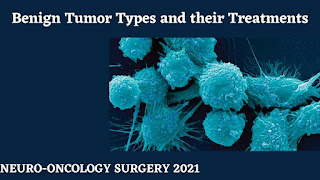Are you familiar with the term "Carpal Tunnel Syndrome"?
The compression of the median nerve at the wrist causes Carpal Tunnel Syndrome (CTS), a frequent issue affecting hand function. The transverse carpal ligament, which forms the top of the carpal tunnel is formed by numerous bones in the wrist. The carpal tunnel holds the median nerve as well as nine tendons. Carpal tunnel syndrome can be caused by inflammation and growth of the median nerve, tendons, thickening of the transverse carpal ligament, or the presence of a mass lesion (such as a tumour or cyst) within the carpal tunnel, or a combination of these factors. The end outcome, regardless of the exact cause is pressure on the median nerve and dysfunction.
Symptoms
of Carpal Tunnel Syndrome
Carpal tunnel syndrome
manifests itself in the following ways:
- Numbness in your palm and thumb, or your index and middle fingers that are burning, tingling, or itching
- Hand tremors and difficulty holding objects
- Feelings of shock that migrate into your fingers
- A tingling sensation that travels up your arm
Because this position
puts more pressure on the median nerve in the carpal tunnel, these sensations
are often exaggerated when the wrist is bent forward. The numbness or pain may
be more intense at night, keeping patients awake or waking them up. This is
frequently the case due to sleeping hand/wrist position. These symptoms may
occur more frequently through the day when doing activities that require you to
bend your wrist. Carpal Tunnel Syndrome might occur if you have a work that
requires you to perform repetitive motions with your arm, hand, or wrist.
Diagnosis
and Tests for Carpal Tunnel Syndrome
Your doctor may do a
Tinel sign test on the palm side of your wrist or fully flex your wrist with
your arms extended. They may also conduct tests such as:
Imaging tests where
your doctor can examine your bones and tissues using X-rays, ultrasounds, or
MRI tests. An electromyogram is a tiny electrode that is inserted into a muscle by
your doctor to measure its electrical activity. Nerve conduction studies are a
type of research that looks at how the nerves transmit. Electrodes are taped to your skin to measure
the signals in your hand and arm's nerves.
Treatment
for Carpal Tunnel Syndrome
Your treatment
will be determined by your symptoms and the stage of your illness. You might
require:
Changes in your
lifestyle: If your symptoms are caused
by repeated motion, take more breaks or do less of the activity that is causing
you pain.
Workouts: Can make you feel better by stretching or
strengthening your muscles. Nerve gliding activities can help your carpal
tunnel nerve glide more freely.
Immobilization: Wearing
a splint to restrict your wrist from moving and relieve pressure on your nerves
may be recommended by your doctor. Wear one at night to help relieve the
numbness or tingling sensation. This can help you sleep better while also
allowing your median nerve to relax.
Medication: To
reduce swelling, your doctor may prescribe anti-inflammatory medicines or
steroid injections.
Surgical
procedures: If none of these therapies work, you may
need a procedure called carpal tunnel release, which enlarges the tunnel and
relieves pressure on the nerve.
Complications
of Carpal Tunnel Syndrome
If you don't treat
carpal tunnel syndrome, the symptoms can persist for a long time and worsen. They
could also leave and then return. The illness is easier to cure if you acquire
a diagnosis early. You can prevent permanent muscle injury and keep your hand
functioning normally.
Preventing
Carpal Tunnel Syndrome
- Keep your wrists straight to avoid carpal tunnel syndrome.
- Keeps your wrist in a neutral posture using a splint or brace.
- Repeatedly flexing and extending your wrists is not recommended.
- Warm up your hands.
- When you get the opportunity, take a break.
- While you're working, make sure your hands and wrists are in the proper position.




Comments
Post a Comment